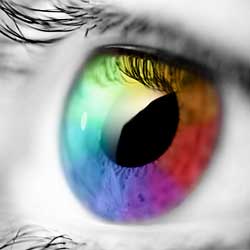Achieving Color Harmony: A Comprehensive Guide to Syncing Photoshop’s Color Settings with All Creative Cloud Apps

Introduction:
Adobe Creative Cloud stands as a powerhouse for creatives, offering a suite of interconnected applications to bring their visions to life. One crucial aspect of seamless creative workflows is achieving color consistency across various applications. This comprehensive guide delves into the intricate process of syncing Photoshop’s color settings with all Creative Cloud apps, ensuring a harmonious and unified color experience for artists, designers, and photographers.
Section 1: The Importance of Color Consistency
1.1 Cross-Application Workflows: Creatives often navigate between different Creative Cloud apps like Photoshop, Illustrator, and InDesign to bring diverse elements together. Maintaining color consistency ensures that visual elements seamlessly blend across applications, creating a cohesive final product.
1.2 Branding and Professionalism: For professionals and businesses, consistent colors are essential for maintaining brand identity. Syncing color settings across Creative Cloud apps guarantees that brand colors remain faithful, fostering a professional and recognizable aesthetic.
1.3 Streamlining the Editing Process: Achieving color harmony streamlines the editing process, reducing the need for manual adjustments when transitioning between applications. This not only saves time but also minimizes the risk of color discrepancies in the final output.
Section 2: Understanding Photoshop’s Color Settings
2.1 Color Settings Overview: Photoshop’s color settings, accessible through the Edit menu under Color Settings, dictate how the software interprets and displays color. Understanding these settings is crucial for achieving consistency across Creative Cloud apps.
2.2 RGB, CMYK, and Other Color Spaces: Photoshop allows users to define the default color space for RGB, CMYK, and other color modes. Delve into the intricacies of choosing the appropriate color spaces based on the intended output, whether for web, print, or other mediums.
2.3 Color Management Policies: Color management policies determine how Photoshop handles color profiles embedded in documents. Explore the options for RGB and CMYK policies, ensuring that color profiles are preserved and maintained during the editing process.
Section 3: Syncing Photoshop’s Color Settings
3.1 Setting Up Color Settings: Begin by configuring Photoshop’s color settings to align with your desired color spaces and management policies. This involves selecting the appropriate RGB and CMYK profiles, setting rendering intents, and specifying color management policies.
3.2 Saving and Exporting Settings: To ensure consistency across Creative Cloud apps, save your configured color settings as a preset. Navigate to the Color Settings dialog, choose “Save,” and export the settings as a .csf (Color Settings File). This file will be used to sync color settings across applications.
Section 4: Applying Color Settings to Other Creative Cloud Apps
4.1 Adobe Bridge: Start by syncing color settings with Adobe Bridge, the digital asset management tool. In Bridge, navigate to Edit > Creative Suite Color Settings and import the saved .csf file, aligning color preferences with those of Photoshop.
4.2 Adobe Illustrator: Achieve a unified color experience by syncing Illustrator with Photoshop’s color settings. In Illustrator, access Edit > Color Settings and import the saved .csf file. Ensure that RGB and CMYK profiles align for seamless integration.
4.3 Adobe InDesign: Extend color consistency to print layouts by syncing InDesign with Photoshop. In InDesign, access Edit > Color Settings and import the saved .csf file. Verify that color management policies align, preserving the integrity of color profiles.
4.4 Adobe XD and Other Creative Cloud Apps: While not all Creative Cloud apps have extensive color management options, it’s essential to explore and configure color settings where applicable. Adobe XD, for instance, allows users to set color profiles and preferences for a cohesive experience.
Section 5: Troubleshooting and Best Practices
5.1 Handling Color Mismatches: Despite syncing color settings, users may encounter color mismatches between applications. Troubleshoot by verifying color profiles, checking color management policies, and ensuring that RGB and CMYK settings align.
5.2 Regularly Updating Color Profiles: Stay abreast of updates and revisions to color profiles. Adobe periodically releases new profiles that enhance color accuracy and compatibility. Regularly update your color profiles to benefit from the latest advancements.
5.3 Collaborating with Team Members: If working in a collaborative environment, ensure that team members are using the same color settings. Establish a standardized workflow and share the saved .csf file with collaborators to maintain consistency across projects.
Section 6: Additional Considerations for Advanced Users
6.1 Soft Proofing in Photoshop: Advanced users may explore soft proofing in Photoshop, a feature that simulates how images will appear in different output conditions. Configure soft proofing settings to anticipate how colors will translate in various mediums.
6.2 Customizing Color Profiles: For specialized projects, consider creating and using custom color profiles. Adobe provides tools like Adobe Color to create custom profiles, allowing users to tailor color settings to specific project requirements.
Conclusion:
Achieving color harmony across Adobe Creative Cloud applications is a fundamental aspect of creating visually stunning and consistent designs. By comprehensively understanding and syncing Photoshop’s color settings with all Creative Cloud apps, users can streamline workflows, maintain brand integrity, and elevate the overall quality of their creative outputs. This guide empowers artists, designers, and photographers to embark on a journey of color synchronization, ensuring that their visual narratives unfold seamlessly across the diverse landscape of Creative Cloud applications.







